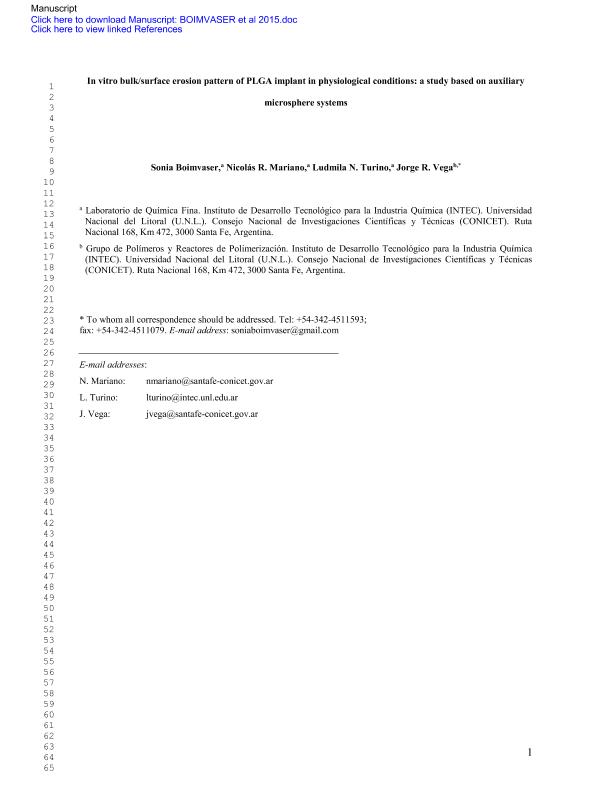Artículo
In vitro bulk/surface erosion pattern of PLGA implant in physiological conditions: a study based on auxiliary microsphere systems
Fecha de publicación:
01/2016
Editorial:
Springer
Revista:
Polymer Bulletin
ISSN:
0170-0839
Idioma:
Inglés
Tipo de recurso:
Artículo publicado
Clasificación temática:
Resumen
This work investigates the degradation of PLGA implants in an aqueous medium maintained at physiological pH ≈ 7.4. Two limiting systems are also investigated, which involve the degradation of PLGA microspheres in two different media characterized by: (i) a non-regulated pH, for emulating the autocatalyzed degradation in the implant core; and (ii) a regulated physiological pH, for emulating the uncatalyzed degradation at the implant surface. The degradation experiments were carried out along 40?50 days, and samples withdrawn during this period were characterized by gravimetry, electronic microscopy, and size exclusion chromatography. Experimental results suggest that PLGA implants are degraded according to a time-variant spatial pattern, which depends on the pH of the surrounding medium. Initially, the implants suffered a typically bulk erosion process, governed by the acidification of the implant core; and after breakage of the implant wall, the regulated physiological pH induces a surface erosion process. The two auxiliary microsphere-based experiments were useful to elucidate the degradation phenomena occurring in the PLGA implants. The evolution of the mass loss and the weight-average molecular weight along the degradation can be successfully predicted by simple mathematical models based on first-order kinetics.
Archivos asociados
Licencia
Identificadores
Colecciones
Articulos(INTEC)
Articulos de INST.DE DES.TECNOL.PARA LA IND.QUIMICA (I)
Articulos de INST.DE DES.TECNOL.PARA LA IND.QUIMICA (I)
Citación
Boimvaser, Sonia; Mariano, Rodolfo Nicolás; Turino, Ludmila Noelia; Vega, Jorge Ruben; In vitro bulk/surface erosion pattern of PLGA implant in physiological conditions: a study based on auxiliary microsphere systems; Springer; Polymer Bulletin; 73; 1; 1-2016; 209-227
Compartir
Altmétricas




